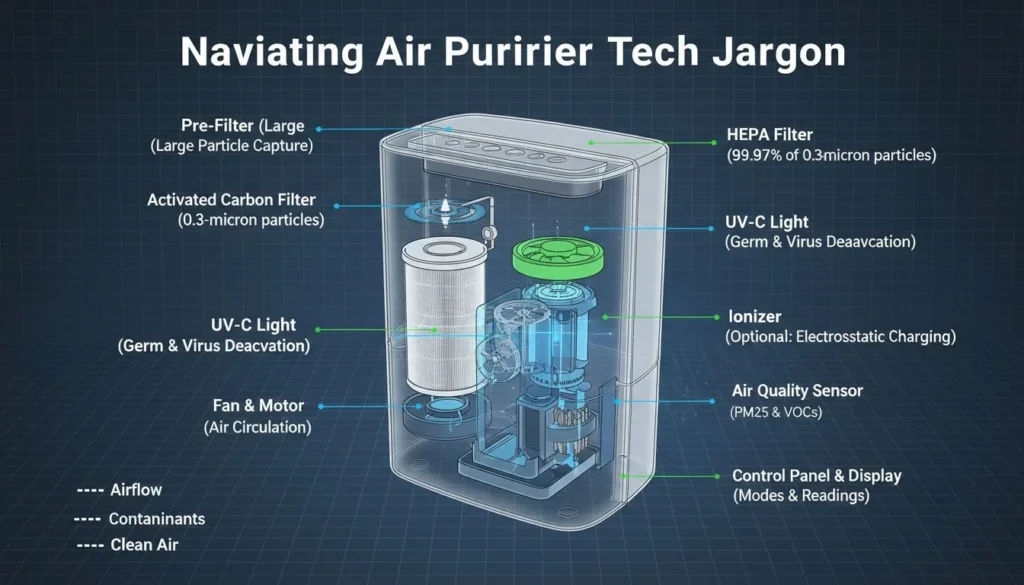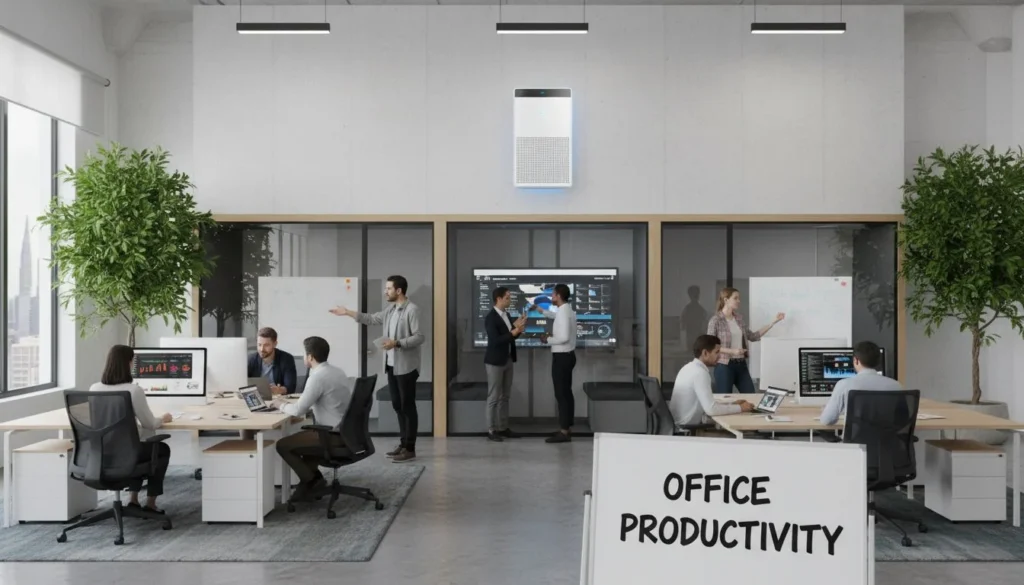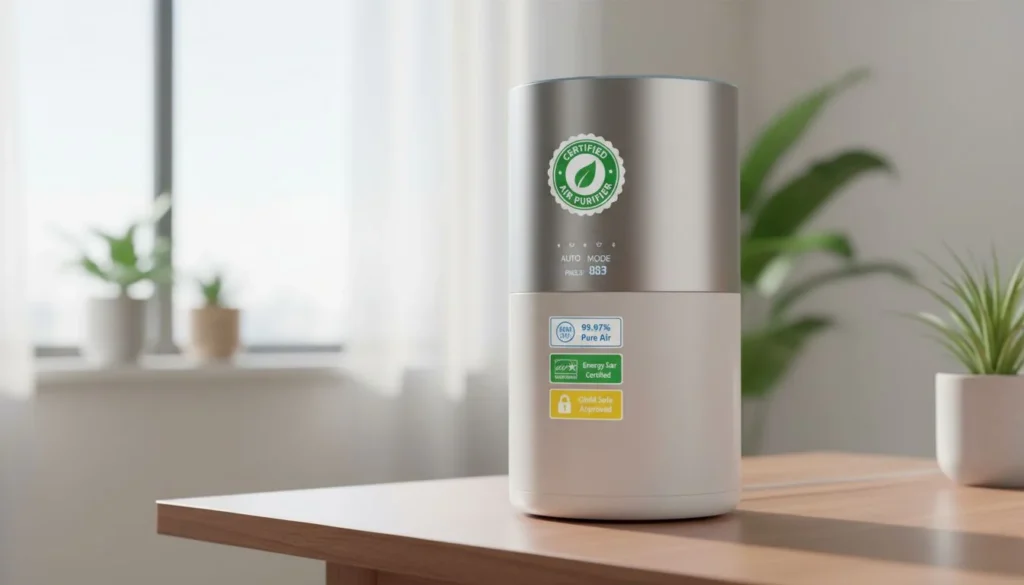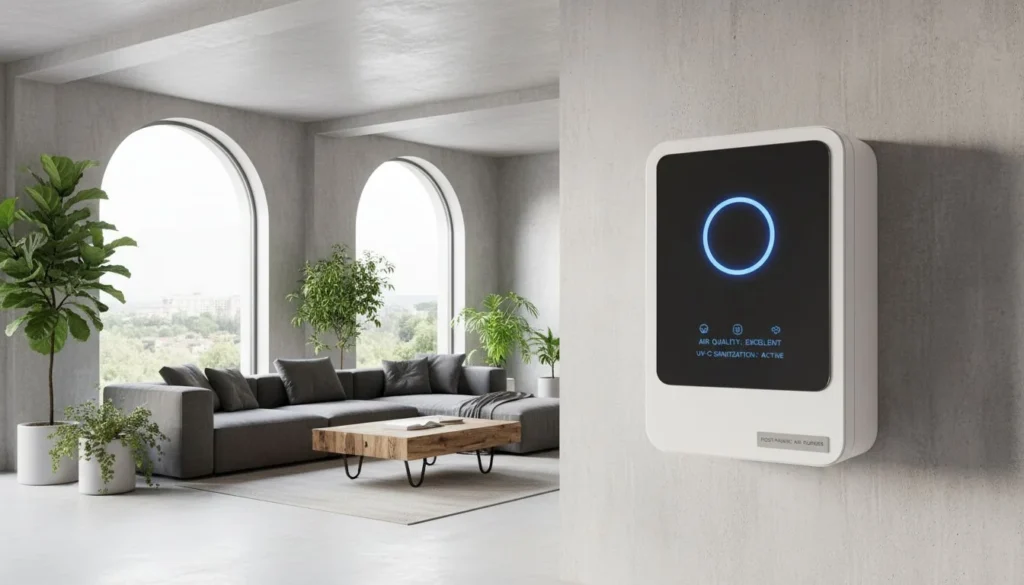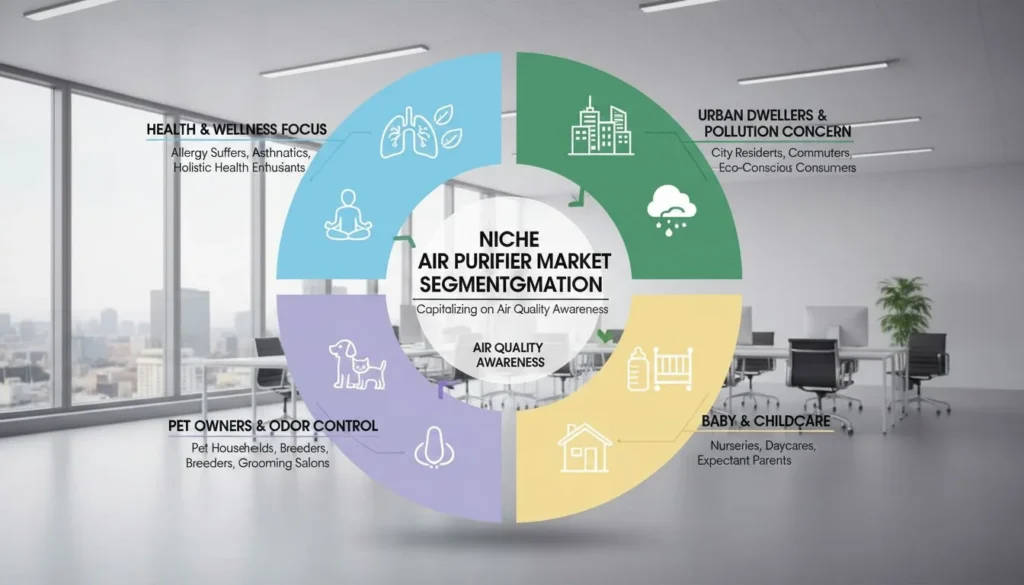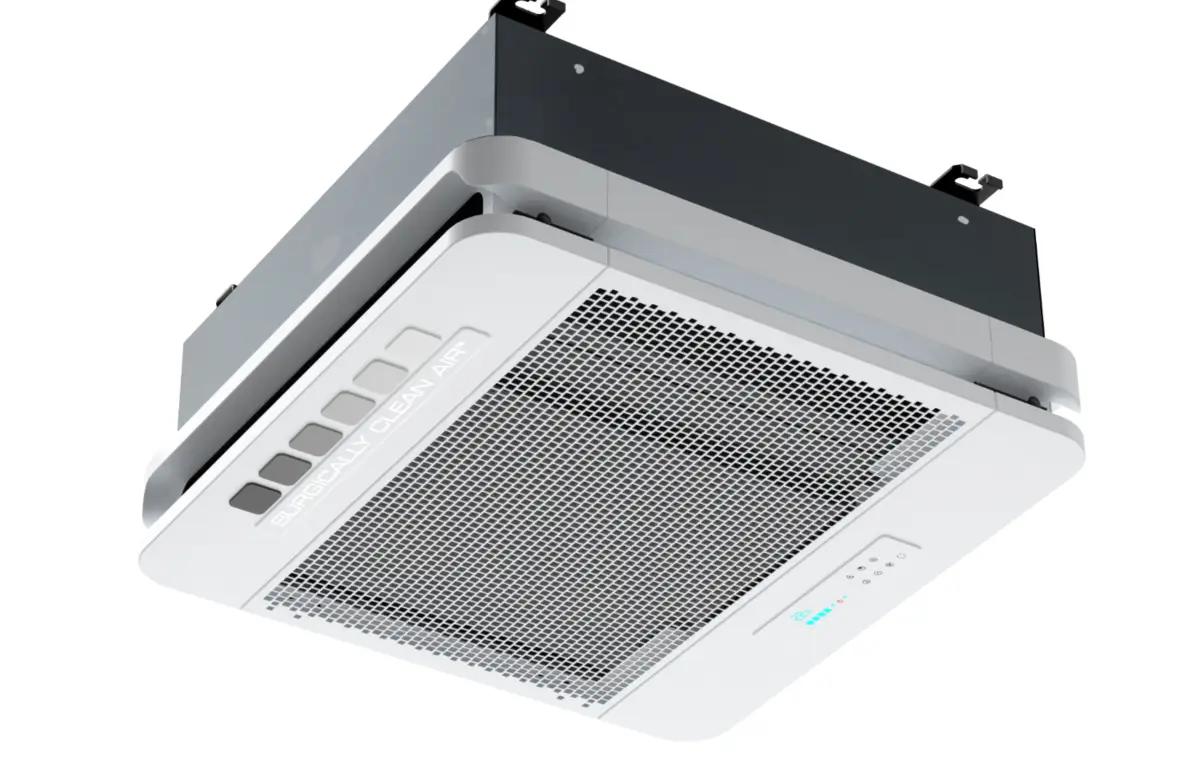
Лучшие очистители воздуха для больниц используют медицинское оборудование HEPA 14 фильтров. Эти фильтры эффективно удаляют бактерии и вирусы. Очистителям требуется высокая скорость подачи чистого воздуха (CADR) для очистки больших площадей. Необходимо одобрение FDA в США. Бесшумная работа важна для поддержания спокойного пространства для пациентов. Спокойная обстановка важна для исцеления.
Помню, как однажды я вошел в больничную палату. Воздух казался тяжелым, с сильным клиническим запахом. Тогда мне стало ясно, насколько важно качество воздуха в таких местах. Выбор воздухоочистителя - это не просто выбор фильтров медицинского класса или проверка CADR рейтинги. Цель - создать условия, в которых пациенты будут хорошо себя чувствовать. Подумайте о вариантах установки: настенные устройства, вероятно, лучше всего подходят для оживленных палат. Уровень шума тоже имеет значение. Представьте, что вы пытаетесь отдохнуть или поговорить с врачом, в то время как машина громко гудит. Такие сертификаты, как разрешение FDA, свидетельствуют о том, что аппарат соответствует строгим санитарным нормам. Принимая решение, помните, что речь идет не только о характеристиках, но и о людях, на которых эти машины влияют. Речь идет о жизни.
Фильтры HEPA 14 необходимы для больничных воздухоочистителей.Правда
Фильтры HEPA 14 эффективно удаляют бактерии и вирусы, что очень важно для больниц.
Все очистители воздуха для больниц должны иметь сертификат FDA.Ложь
Разрешение FDA требуется только в США, а не повсеместно для всех больниц.
Почему для больничных воздухоочистителей необходим фильтр медицинского класса?
Представьте, что вы входите в больницу и вдыхаете воздух, чистый, как горный бриз. Это и есть чудо фильтров медицинского класса.
Фильтры медицинского класса, такие как HEPA 14, играют важнейшую роль в больничных воздухоочистителях. Они удаляют из воздуха вредные бактерии, вирусы и другие загрязняющие вещества. Этот процесс создает более безопасную среду. Пациенты и медицинский персонал выигрывают от такой безопасности. Это очень важно.
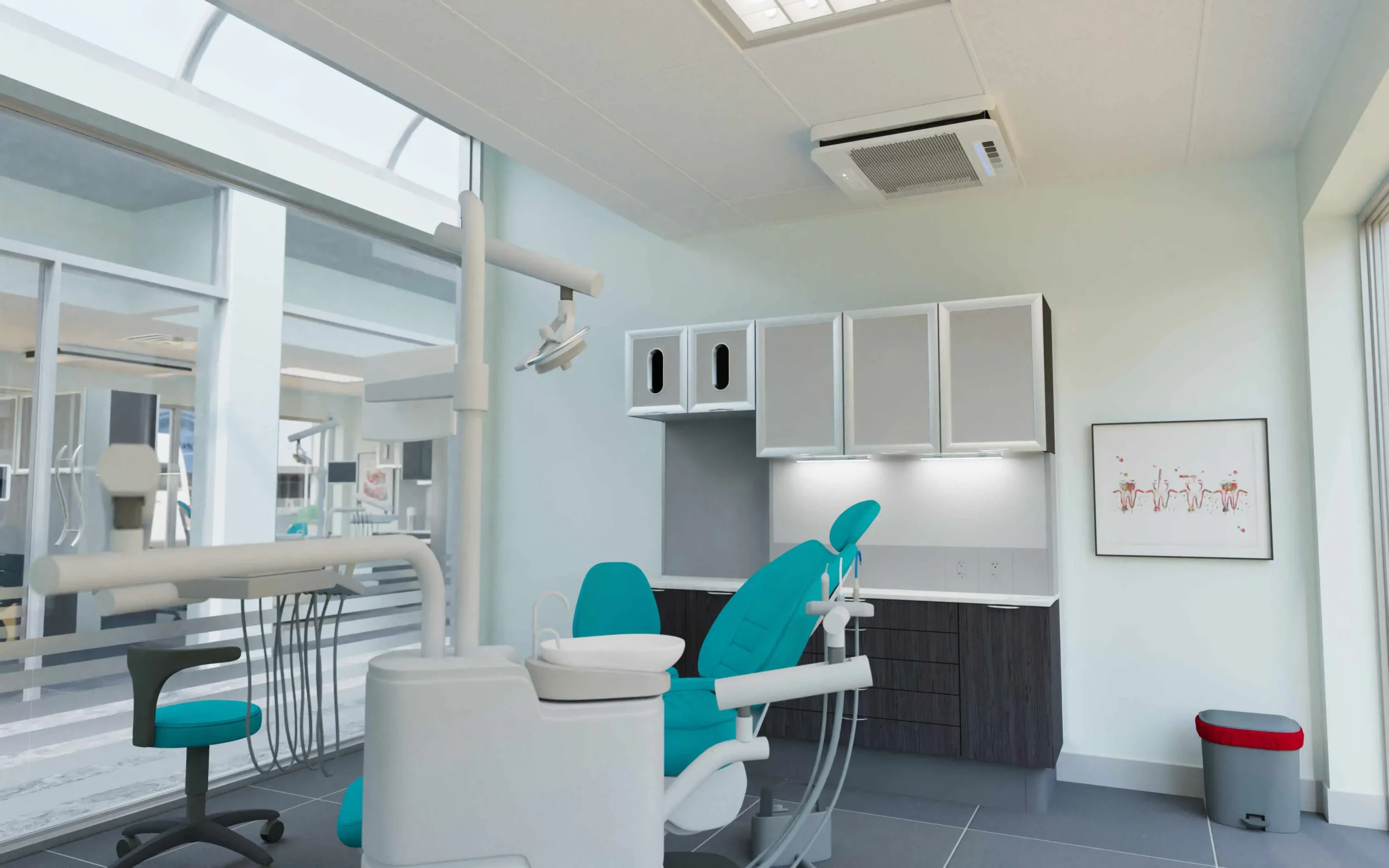
Роль фильтров медицинского класса
Я помню, как впервые осознал, насколько важно качество воздуха в больницах. Это случилось, когда я навещал друга в отделении интенсивной терапии. Воздух казался другим - более чистым, почти успокаивающим. Именно тогда я узнал о фильтрах медицинского класса, таких как HEPA 14. Это не обычные гаджеты: они улавливают не менее 99,995% мельчайших частиц, размером всего 0,3 микрона. Это уровень фильтрации1 очень важны, поскольку в больницах даже самое незначительное загрязнение может стать вопросом жизни и смерти. Эти фильтры служат невидимыми защитниками от болезней.
Сравнение медицинских и стандартных фильтров
| Характеристика | Фильтры медицинского класса | Стандартные фильтры |
|---|---|---|
| Улавливание частиц | ≥99.995% 0,3 микрона | ≤99% крупных частиц |
| Целевые загрязнители | Бактерии, вирусы | Пыль, пыльца |
| Приложение | Больницы | Дома, офисы |
Безопасность пациентов является неотъемлемой частью медицинские учреждения2. Фильтры медицинского класса необходимы там, где безопасность пациента имеет первостепенное значение. Доверили бы вы стандартный фильтр очень уязвимым пациентам? Ясно, что нужно использовать только лучшее.
Установка и эксплуатационные характеристики
Давайте поговорим об установке. Установка этих очистителей - это не просто размещение их в комнате; больницы - это оживленные места с особыми потребностями. Высокий коэффициент подачи чистого воздуха (CADR) более 300 CFM рекомендуется для больших помещений площадью более 1000 кв. футов. Найти подходящее место для них может быть непросто; настенные или потолочные варианты обеспечивают минимальное препятствие и оптимальную циркуляцию воздуха.
Шум - это скрытая проблема, которую необходимо решить, чтобы не беспокоить пациентов и персонал. Многие больницы выбирают очистители с Отмена децибел™3 Технология обеспечивает бесшумную работу, поскольку тишина и покой очень важны для лечения.
Соответствие нормативным требованиям
Я понял, что следовать правилам очень важно, особенно в сфере здравоохранения, где соблюдение правил, таких как сертификация FDA, является обязательным для воздухоочистителей, используемых в американских больницах. Этот сертификат гарантирует, что продукт соответствует стандартам безопасности, необходимым для медицинских учреждений. Такие бренды, как Active Pure и Healthway, прошли эту сертификацию, что дает необходимую уверенность.
В Китае очистители должны быть сертифицированы как машины для дезинфекции воздуха, что подчеркивает важность соблюдения региональных норм, поскольку в области здравоохранения и безопасности не существует универсального решения.
Место для заключения
Необходимость использования фильтров медицинского класса в больничных учреждениях крайне важна для обеспечения безопасности и гигиены - это защита здоровья и жизни людей. Рассматривая такие варианты, как HEPA Благодаря 14 фильтрам больницы могут обеспечить более чистую и безопасную среду для всех.
Фильтры HEPA 14 задерживают 99,995% частиц размером 0,3 микрона.Правда
Фильтры HEPA 14 предназначены для улавливания не менее 99,995% частиц.
Стандартные фильтры подходят для использования в больничных условиях.Ложь
Стандартные фильтры не могут обеспечить защиту, необходимую в больницах.
Как CADR Влияют ли они на эффективность очистителей воздуха в больницах?
Люди часто задумываются о том, как в больницах сохранить воздух свежим и чистым. Воздухоочистители с хорошим CADR рейтинги помогают удалять загрязнения.
CADR или Clean Air Delivery Rate, определяет, насколько эффективно воздухоочиститель очищает воздух. Больницам необходимы высокие CADR рейтинги. Эти рейтинги показывают, что машины быстро удаляют такие загрязнения, как пыль, пыльца и дым. Они действительно улучшают качество воздуха. Воздух становится чище. Это создает более безопасную среду для пациентов и персонала.
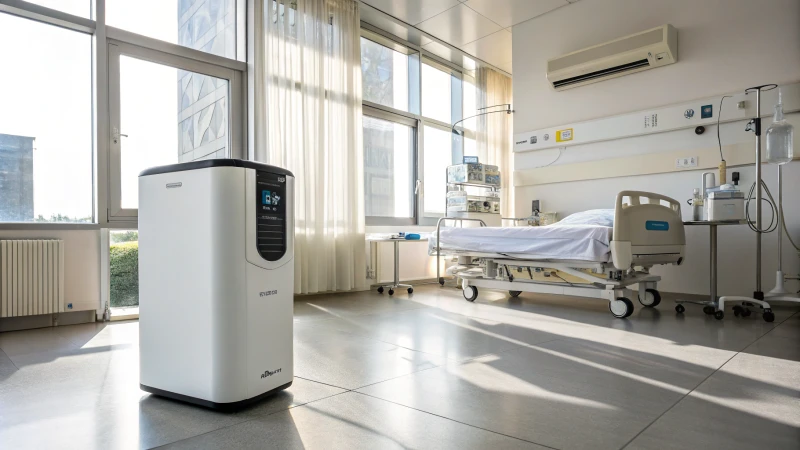
Понимание CADR в больничных условиях
Представьте, что вы заходите в больничную палату и ожидаете, что там будет чистый и свежий воздух. Вокруг плавает множество крошечных невидимых частиц, готовых к тому, чтобы их вдохнул кто-то хрупкий. Сайт Коэффициент подачи чистого воздуха (CADR)4 помогает определить, насколько хорошо воздухоочиститель очищает воздух. В таких важных местах, как больницы, следует выбирать устройства с высокой CADR становится необходимым. Показатели свыше 300 CFM идеальны для покрытия больших пространств, например, загруженных отделений скорой помощи.
| Загрязнитель | Рекомендуем CADR |
|---|---|
| Пыль | 300+ CFM |
| Пыльца | 350+ CFM |
| Дым | 400+ CFM |
Фильтрация медицинского класса
Но не останавливайтесь на CADR. Изучение фильтров медицинского класса, таких как HEPA 14 имеет значение. Эти фильтры задерживают бактерии и вирусы - нежелательных гостей в больничном воздухе. Они практически задерживают все вредные частицы до того, как они попадут в наши легкие. В небольших больничных помещениях, очистители воздуха5 которые можно монтировать на стену или встраивать в потолок, меняют все.
Нормативные соображения
Понимание правил похоже на изучение нового языка. В США устройствам может потребоваться разрешение FDA, подтверждающее их пригодность для использования в медицинских учреждениях. Такие бренды, как Active Pure и Healthway, отвечают этим требованиям для больниц. В то же время в Китае устройства должны быть квалифицированы как машины для дезинфекции воздуха, чтобы соответствовать местным стандартам.
Важность борьбы с шумом
А теперь подумайте о шуме - никто не любит шумных соседей, особенно когда тишина является частью лечения. Представьте, что вы пытаетесь заснуть, когда рядом находится громкий аппарат! Такие технологии, как Decibel Cancellation™, помогают значительно снизить уровень шума при работе.
Если кто-то запутался в выборе, обратитесь к экспертам из таких компаний, как HisoAir6 вероятно, предоставляет экспертные консультации. Баланс между производительностью и комфортом пациента включает в себя не только цифры, но и душевное спокойствие.
Показатель CADR выше 300 CFM идеально подходит для больничных воздухоочистителей.Правда
CADR свыше 300 CFM эффективно покрывает большие больничные помещения.
Разрешение FDA является обязательным для всех очистителей воздуха в больницах США.Ложь
Не все очистители воздуха для больниц требуют разрешения FDA, только некоторые.
Какие сертификаты следует искать в очистителях воздуха для больниц?
Представьте себе комфорт, который дарит очиститель воздуха для больниц, имеющий самые высокие сертификаты. Это действительно важно не только для чистоты воздуха, но и для защиты жизни.
Выбирайте воздухоочистители, имеющие важные сертификаты для больниц. HEPA 14 фильтров обеспечивают фильтрацию медицинского класса, что крайне важно. Разрешение FDA подтверждает безопасность для здоровья. Устройствам требуется CADR с производительностью свыше 300 CFM. Это гарантирует оптимальную производительность.
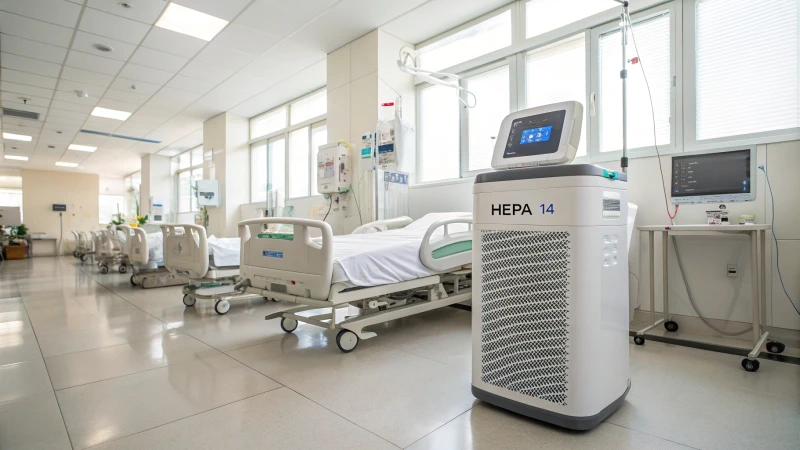
Понимание ключевых сертификатов
Понимание работы воздухоочистителей может показаться запутанным, особенно когда здоровье находится под угрозой. Я чувствовал то же самое, когда впервые изучал эту тему. Все казалось полным сложных слов и множества коротких форм. Ясно одно - важность сертификации.
Один важный сертификация7 это HEPA 14, который обеспечивает фильтрацию медицинского класса. Этот тип фильтра способен удалить до 99,995% частиц, находящихся в воздухе, включая бактерии и вирусы. Такая эффективность крайне важна в медицинских учреждениях.
Еще один важный сертификат - одобрение FDA. В США одобрение FDA означает, что воздухоочиститель соответствует строгим стандартам безопасности, что особенно важно в медицинских учреждениях.
| Сертификация | Описание |
|---|---|
| HEPA 14 | Фильтр медицинского класса способен удалить 99,995% частиц, находящихся в воздухе. |
| Разрешение FDA | Указывает на соответствие американским стандартам безопасности здоровья. |
Показатели и стандарты производительности
При выборе воздухоочистителя для больниц и клиник решающее значение имеет его производительность.
Коэффициент подачи чистого воздуха (CADR8) - еще один важный параметр, который необходимо учитывать. Он определяет, насколько быстро воздухоочиститель может очистить воздух в определенной зоне.
Для больниц рекомендуется выбирать очистители с CADR Более 300 CFM для эффективного покрытия больших пространств.
| Метрика производительности | Важность |
|---|---|
| CADR > 300 CFM | Обеспечивает эффективную очистку воздуха на больших площадях. |
Установка и уровень шума
Чистота важна, но и спокойная обстановка в больничных условиях тоже важна.
В больничных условиях также важны варианты установки. Настенные или потолочные очистители могут быть более подходящими, поскольку они экономят пространство и обеспечивают лучшую циркуляцию воздуха.
Бренды, такие как HisoAir, предлагают подобные конфигурации, идеально подходящие для использования в больницах.
Уровень шума никогда не должен игнорироваться, поскольку в больницах требуется спокойная обстановка как для пациентов, так и для персонала. Выбор воздухоочистителя с передовой технологией шумоподавления, например Decibel Cancellation™, поможет сохранить спокойствие в медицинских учреждениях.
Чтобы узнать больше о технологии борьбы с шумом9Дополнительную помощь могут оказать продукты с уникальными свойствами, такие как HisoAir.
Фильтры HEPA 14 удаляют 99,995% частиц.Правда
Фильтры HEPA 14 предназначены для улавливания 99,995% частиц, находящихся в воздухе.
Для больничных очистителей не требуется разрешение FDA.Ложь
Сертификат FDA гарантирует соответствие воздухоочистителей стандартам безопасности в больницах.
Как различные типы установки влияют на работу больничного воздухоочистителя?
Вы когда-нибудь задумывались о том, как различные способы размещения больничных воздухоочистителей влияют на их эффективность?
Различные типы больничных воздухоочистителей по-разному способствуют движению воздуха. Настенные, потолочные и переносные очистители влияют на движение воздуха. Они меняют площадь помещения. Они также изменяют уровень шума. У каждого типа очистителей есть свои преимущества и недостатки. Эти преимущества и недостатки соответствуют уникальным потребностям каждой больницы. Кроме того, они вписываются в инфраструктуру здания.
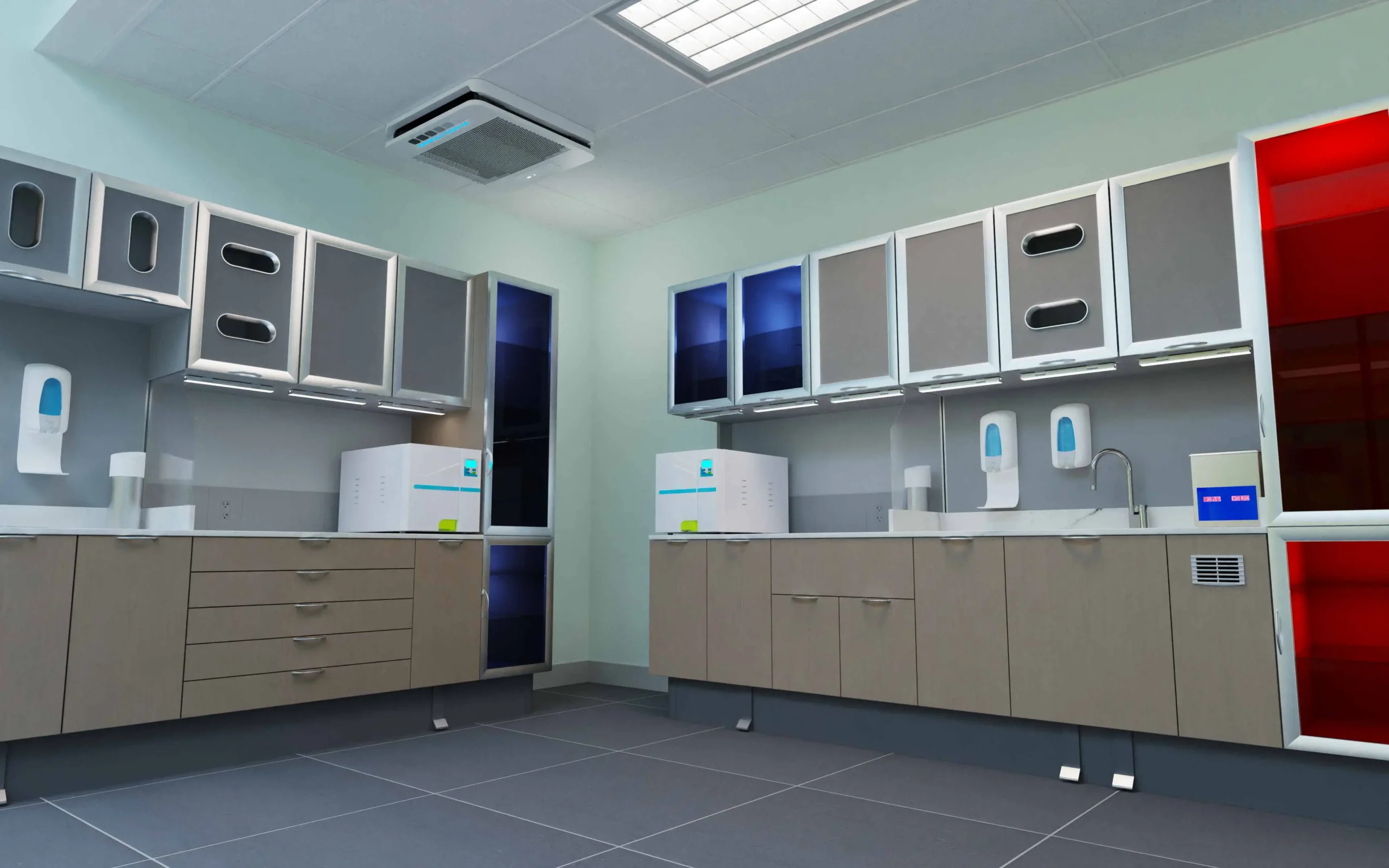
Настенные воздухоочистители
Настенные воздухоочистители - оптимальный выбор для больниц, где важен каждый сантиметр. Представьте, что вы идете по оживленному отделению - пространство действительно важно, не так ли? Такие очистители экономят площадь, позволяя свободно пропускать чистый воздух. Однажды я посетил больницу, где использовались эти приборы, и мне показалось, что там стало намного просторнее. Приборы оснащены специальными фильтрами, которые улавливают даже самые мелкие микроорганизмы, что действительно делает больницу безопаснее.
| Преимущества | Соображения |
|---|---|
| Компактный дизайн | Для установки требуются прочные стены |
| Беспрепятственный поток воздуха | Может потребоваться профессиональная установка |
| Надежное размещение | Ограниченная мобильность |
Для получения дополнительной информации о настенные воздухоочистители10Проконсультируйтесь с экспертами, которые подскажут вам, что нужно для установки.
Потолочные воздухоочистители
Потолочные очистители - тихие герои в больших больничных палатах. Они напоминают мне работу театральных осветителей - их разумно устанавливают, чтобы охватить большую площадь, не создавая препятствий. Такие очистители равномерно распределяют воздух, что особенно ценно в палатах для пациентов или в оживленных зонах ожидания. Многие из них предназначены для снижения уровня шума и работают бесшумно, чтобы никого не беспокоить. Это действительно помогает сохранить мир, что очень важно в больницах.
- Широкий охват: Потолочные устройства обычно занимают большую площадь и обеспечивают постоянный поток воздуха в помещении.
- Бесшумная работа: Во многих моделях используются бесшумные технологии, что важно для спокойной обстановки в больнице.
Если вы думаете о том. потолочные воздухоочистители11Поговорите со специалистами, которые знают, вписываются ли они в существующую систему.
Портативные очистители воздуха
Портативные воздухоочистители очень удобны - представьте, что вам нужно быстро исправить качество воздуха в разных отделениях больницы. Их можно легко перемещать, обеспечивая очистку там, где она больше всего необходима. От приемных отделений до изоляторов - они соответствуют меняющимся потребностям больниц. Они доказывают свою ценность во временных ситуациях или при непредсказуемом количестве пациентов.
- Легко перемещать: Быстро перемещается к местам, требующим немедленной очистки воздуха.
- Гибкое использование: Подходит для помещений разного размера и назначения.
При возникновении временных условий или изменении количества пациентов подумайте о том. Преимущества портативных очистителей12.
Знание того, как различные установки влияют на производительность, может реально улучшить качество воздуха в больницах. Изучив специфические потребности каждого помещения, администраторы могут выбрать наиболее эффективный тип очистителя для повышения безопасности и комфорта пациентов.
Настенные очистители экономят площадь в больницах.Правда
Они используют вертикальные поверхности, освобождая важные площади пола.
Потолочные очистители мешают работе больницы.Ложь
Они используют верхнее пространство, обеспечивая беспрепятственное движение внизу.
Заключение
Больницам требуются воздухоочистители с HEPA 14 фильтров, высокий CADR и одобрены FDA для обеспечения оптимального качества воздуха, гарантирующего безопасность и комфорт пациентов в лечебных учреждениях.
-
Узнайте, как фильтры HEPA 14 предназначены для улавливания микроскопических частиц, представляющих опасность для здоровья в медицинских учреждениях. ↩
-
Узнайте, почему эффективная очистка воздуха имеет решающее значение для инфекционного контроля в больницах. ↩
-
Узнайте, как технология Decibel Cancellation™ обеспечивает бесшумную работу, повышая комфорт в больничных условиях. ↩
-
Перейдите по этой ссылке, чтобы понять, как высокий CADR влияет на эффективность очистки воздуха в больничных условиях. ↩
-
Узнайте, почему фильтры HEPA 14 имеют решающее значение для улавливания вредных частиц в медицинских учреждениях. ↩
-
Узнайте, как специалисты HisoAir могут помочь в выборе оптимальных воздухоочистителей, предназначенных для использования в больницах. ↩
-
Узнайте, почему фильтры HEPA 14 необходимы для очистки воздуха в больницах, обеспечивая безопасность за счет улавливания бактерий и вирусов. ↩
-
Узнайте, как рейтинги CADR влияют на производительность воздухоочистителей, что очень важно для поддержания качества воздуха в больших больничных помещениях. ↩
-
Узнайте, как технология Decibel Cancellation снижает уровень шума в воздухоочистителях, повышая комфорт пациентов и эффективность работы персонала. ↩
-
Узнайте, почему настенные очистители занимают мало места и безопасны для больниц. ↩
-
Узнайте, как потолочные установки улучшают покрытие и снижают уровень шума. ↩
-
Узнайте, как портативные очистители обеспечивают гибкость и целенаправленную очистку. ↩


